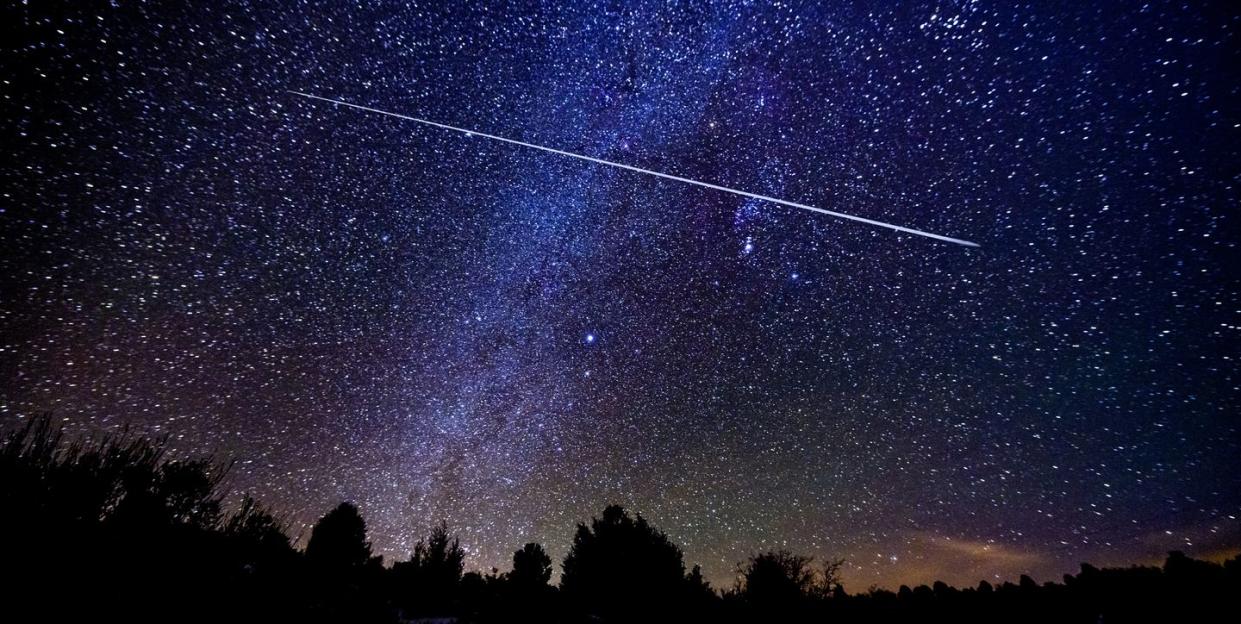Here's How to Watch the Last Meteor Shower of Spring This Week

The 2021 Eta Aquarid meteor shower lasts from April 19 to May 28, peaking in the early morning hours of Wednesday, May 5.
Shooting stars will be visible each night from 3 a.m. until dawn.
The next meteor shower doesn’t peak until late July.
You might be over April showers, but there’s one more you’ll absolutely want to enjoy: the Eta Aquarid meteor shower. It’s one of the most beautiful ways to send off spring, producing dozens of shooting stars each hour.
This year’s Eta Aquarid meteor shower lasts until May 28, and it peaks in the early morning hours of Wednesday, May 5, per the American Meteor Society (AMS). Meteors should be visible from 3 a.m. to dawn each morning, with best viewing from 3:25 to 4:25 a.m., according to the Griffith Observatory.
Stargazers can expect to spot around 30 meteors per hour during the shower’s peak, NASA explains, but that number might drop depending on your location. Unlike most other meteor showers this year, the Eta Aquarids peak on the night of a waning crescent moon, meaning there will be little interfering light in the sky for optimal viewing conditions.
The May meteor shower is known for producing long, easy-to-spot shooting stars, according to the AMS. Activity will remain consistent for a week centered on May 5, meaning you have another chance to see the show if you miss it on Wednesday morning. This is also your last chance to catch a meteor shower for a few months; after the Eta Aquarids peak this week, there won’t be a similar event until the Southern Delta Aquarids reach their height in late July, per the Griffith Observatory.
The Eta Aquarid meteor shower originates from Halley’s Comet, according to NASA. When the Earth passes through debris left behind by the comet each year, the space dust burns up in our atmosphere, causing the bright trails we know as shooting stars.
To give yourself the best possible view of the Eta Aquarids, lay on your back in an area with as little artificial light as possible. The meteors won’t be clustered in one region, so try to give yourself an unobstructed view of the sky. Once you’re situated, all you need to do is sit back and wait for the first meteor to streak by—you’re in for one of the greatest shows of the year.
Want more recipes, design ideas, and fun updates from Ree? Follow The Pioneer Woman Magazine on Facebook for all of that and more!

